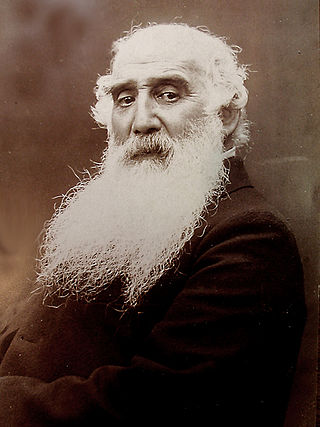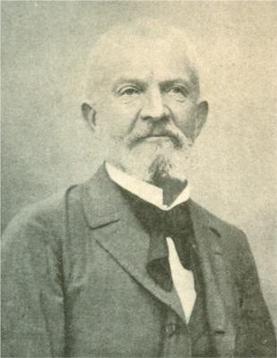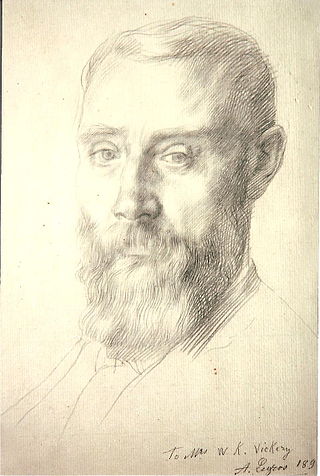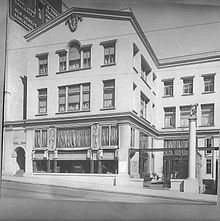
Jacob Abraham Camille Pissarro was a Danish-French Impressionist and Neo-Impressionist painter born on the island of St Thomas. His importance resides in his contributions to both Impressionism and Post-Impressionism. Pissarro studied from great forerunners, including Gustave Courbet and Jean-Baptiste-Camille Corot. He later studied and worked alongside Georges Seurat and Paul Signac when he took on the Neo-Impressionist style at the age of 54.

Impressionism was a 19th-century art movement characterized by relatively small, thin, yet visible brush strokes, open composition, emphasis on accurate depiction of light in its changing qualities, ordinary subject matter, unusual visual angles, and inclusion of movement as a crucial element of human perception and experience. Impressionism originated with a group of Paris-based artists whose independent exhibitions brought them to prominence during the 1870s and 1880s.

Paul Cézanne was a French Post-Impressionist painter whose work introduced new modes of representation and influenced avant-garde artistic movements of the early 20th century. Cézanne is said to have formed the bridge between late 19th-century Impressionism and early 20th century Cubism.

Post-Impressionism was a predominantly French art movement that developed roughly between 1886 and 1905, from the last Impressionist exhibition to the birth of Fauvism. Post-Impressionism emerged as a reaction against Impressionists' concern for the naturalistic depiction of light and colour. Its broad emphasis on abstract qualities or symbolic content means Post-Impressionism encompasses Les Nabis, Neo-Impressionism, Symbolism, Cloisonnism, the Pont-Aven School, and Synthetism, along with some later Impressionists' work. The movement's principal artists were Paul Cézanne, Paul Gauguin, Vincent van Gogh and Georges Seurat.

Henri-Edmond Cross, born Henri-Edmond-Joseph Delacroix, was a French painter and printmaker. He is most acclaimed as a master of Neo-Impressionism and he played an important role in shaping the second phase of that movement. He was a significant influence on Henri Matisse and many other artists. His work was instrumental in the development of Fauvism.

Neo-Impressionism is a term coined by French art critic Félix Fénéon in 1886 to describe an art movement founded by Georges Seurat. Seurat's most renowned masterpiece, A Sunday Afternoon on the Island of La Grande Jatte, marked the beginning of this movement when it first made its appearance at an exhibition of the Société des Artistes Indépendants in Paris. Around this time, the peak of France's modern era emerged and many painters were in search of new methods. Followers of Neo-Impressionism, in particular, were drawn to modern urban scenes as well as landscapes and seashores. Science-based interpretation of lines and colors influenced Neo-Impressionists' characterization of their own contemporary art. The Pointillist and Divisionist techniques are often mentioned in this context, because they were the dominant techniques in the beginning of the Neo-Impressionist movement.

Armand Guillaumin was a French impressionist painter and lithographer.

William Henry Crocker I was an American banker, the president of Crocker National Bank and a prominent member of the Republican Party.

William Kingston Vickery was an Irish-American picture dealer who founded the San Francisco interior design firm and art gallery of Vickery, Atkins & Torrey. His art exhibitions are credited with bringing French Impressionism to the attention of Californians.

John Rewald was an American academic, author and art historian. He was known as a scholar of Impressionism, Post-Impressionism, Cézanne, Renoir, Pissarro, Seurat, and other French painters of the late 19th century. He was recognized as a foremost authority on late 19th-century art. His History of Impressionism is a standard work.

Paul Durand-Ruel was a French art dealer associated with the Impressionists and the Barbizon School. Being the first to support artists such as Claude Monet, Camille Pissarro, and Pierre-Auguste Renoir, he is known for his innovations in modernizing art markets, and is generally considered to be the most important art dealer of the 19th century. An ambitious entrepreneur, Durand-Ruel cultivated international interest in French artists by establishing art galleries and exhibitions in London, New York, Berlin, Brussels, among other places. Additionally, he played a role in the decentralization of art markets in France, which prior to the mid-19th century was monopolized by the Salon system.
John Henry Paul Atkins was an Irish-American designer who cofounded the San Francisco, California art gallery Vickery, Atkins & Torrey.
Arthur Atkins was an American tonalist landscape painter. He emigrated to San Francisco at the age of 19. He was essentially self-taught, but studied briefly at the San Francisco School of Design. His paintings were shown at the Vickery, Atkins & Torrey gallery and at his Jackson Street studio, both in San Francisco, and his paintings sold well. His brother, Henry Atkins and his uncle, William Kingston Vickery were co-founders of the Vickery, Atkins & Torrey art gallery.

The Stafford Gallery was an early 20th-century art gallery in London. Artists whose works were exhibited there include both internationally known painters such as Pablo Picasso, Paul Gauguin, Paul Cézanne and Gustave Courbet and significant English figures such as Walter Sickert and Sir William Nicholson.

Côte des Bœufs at L'Hermitage is an oil-on-canvas landscape painting by the French Impressionist artist Camille Pissarro. It was painted in 1877, and displayed the same year at an exhibition now generally referred to as the third Impressionist exhibition. The picture is large by Pissarro's measure, and he described the effort of painting it as the 'work of a benedictine'. Pissarro was proud of the painting, and it remained in his family's possession until 1913. It presently hangs in the National Gallery, London.
Lucy Angeline Bacon was a Californian artist known for her California Impressionist oil paintings of florals, landscapes and still lifes. She studied in Paris under the Impressionist Camille Pissarro. She is the only known Californian artist to have studied under any of the great French Impressionists.

Anne Bremer was a California painter, influenced by Post-Impressionism, who was called "the most 'advanced' artist in San Francisco" in 1912 after art studies in New York and Paris. She was described in 1916 as "one of the strong figures among the young moderns" and later as "a crusader for the modern movement." She had numerous solo exhibitions, including one in New York.
Joachim Pissarro is an art historian, theoretician, curator, educator, and director of the Hunter College Galleries and Bershad Professor of Art History at Hunter College of the City University of New York. His latest book, authored with art critic David Carrier, is called Wild Art. Pissarro was curator at the Museum of Modern Art's Department of Painting and Sculpture from 2003 to 2007.
Audrey Jones Beck was an American art collector and philanthropist who donated her personal art collection to the Museum of Fine Arts, Houston. The John A. and Audrey Jones Beck Collection included impressionist and post-impressionist paintings, and the museum named its Audrey Jones Beck Building in her honor.
Victor Alfred Paul Vignon was a French Impressionist landscape painter and graphic artist. He was involved with the impressionism movement and its protagonists, as he exhibited at the fifth, sixth, seventh, and eight Paris Impressionist Exhibitions from 1880 to 1886.



















